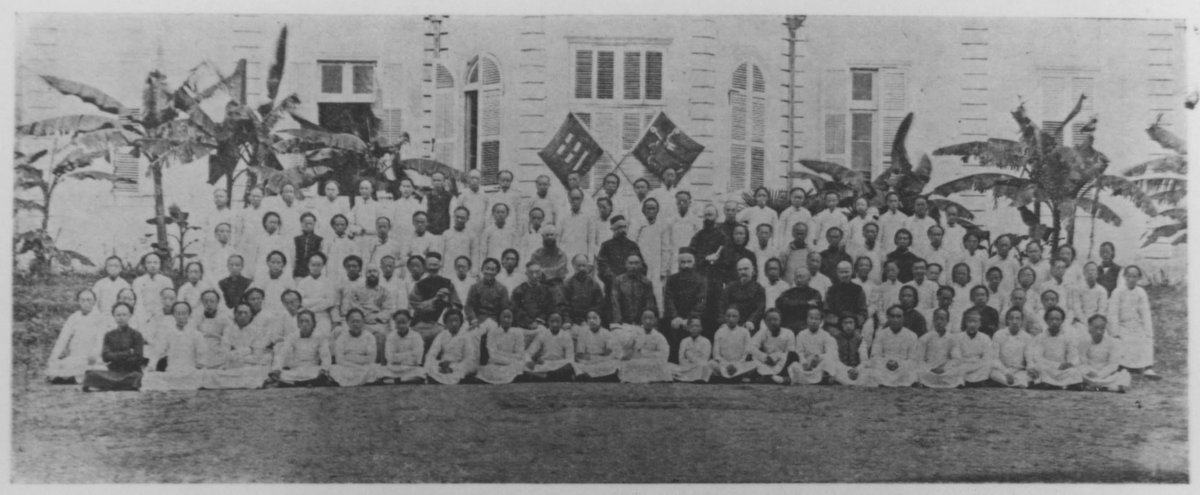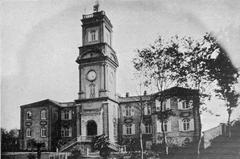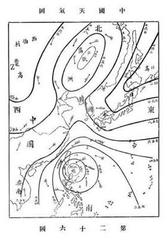
Xujiahui Observatory Visiting Hours, Tickets, and Travel Guide in Shanghai
Date: 15/06/2025
Introduction
Nestled in the heart of Shanghai’s historic Xuhui District, the Xujiahui Observatory stands as a monument to the city’s unique blend of science, culture, and faith. Established in 1872 by French Jesuit missionaries, it is one of China’s earliest modern astronomical and meteorological observatories. Over the years, this site has evolved from a pioneering research center into the present-day Shanghai Meteorological Museum, offering visitors a window into the fusion of Western scientific methodologies and Chinese traditions. Whether you are a history enthusiast, science lover, or curious traveler, this comprehensive guide will help you explore the observatory’s fascinating legacy, understand its visiting hours and ticketing procedures, and discover nearby attractions for an enriching visit (realinshanghai.com; Swissnex China; Shanghai Deep Tour; Shanghai Government).
Table of Contents
- Introduction
- Origins and Jesuit Legacy
- Establishment and Scientific Contributions
- Architectural and Cultural Significance
- Modern Role: Shanghai Meteorological Museum
- Visiting Hours, Tickets, and Accessibility
- Exhibits and Visitor Experience
- Nearby Attractions
- Frequently Asked Questions (FAQ)
- Visitor Tips and Practical Information
- Conclusion
- References
Origins and Jesuit Legacy
The story of Xujiahui Observatory is intertwined with the Jesuit legacy in China. The area’s name, meaning “Xu’s junction,” commemorates Xu Guangqi, a 17th-century scholar-official, scientist, and one of China’s most prominent Catholic converts. Xu’s collaboration with Jesuit Matteo Ricci promoted knowledge exchange and paved the way for the Jesuits to acquire land in Xujiahui, later developing a sprawling complex of religious, educational, and scientific institutions. The observatory, historically known as Zikawei Observatory, became a beacon for scientific progress and cross-cultural dialogue (realinshanghai.com).
Establishment and Scientific Contributions
Founded in 1872, the Xujiahui Observatory began as a center for meteorological, astronomical, and geomagnetic research. The Jesuit missionaries introduced advanced Western instruments and pioneered systematic weather observations in China, with continuous records dating back to 1873. These data remain invaluable for climate research today.
The observatory’s contributions extended to astronomy, where its staff observed solar and lunar eclipses, tracked planetary movements, and mapped the Earth’s magnetic field. This work was conducted by a collaborative team of European Jesuits and Chinese scholars, and the data were shared internationally, cementing the observatory’s reputation as a leading research institution in East Asia (realinshanghai.com).
Architectural and Cultural Significance
The Xujiahui Observatory is notable for its architectural blend of European and Chinese styles. The three-story Romanesque structure, completed in 1900, features a gray brick façade, round-arched windows with red brick framing, and a central wind-measuring tower rising 40 meters above the building. The observatory was part of a larger Jesuit complex that included the St. Ignatius Cathedral, schools, and the Bibliotheca Zikawei library, embodying the Jesuit commitment to integrating faith, education, and science (Shanghai Deep Tour).
Modern Role: Shanghai Meteorological Museum
Despite the upheavals of the 20th century, including the Jesuits’ departure after 1949, the observatory continued its scientific mission under the Shanghai Bureau of Meteorology. Today, it operates as the Shanghai Meteorological Museum, preserving its architectural heritage and offering interactive exhibits on meteorology, astronomy, and Shanghai’s scientific history (Shanghai Government; Shine.cn).
The museum engages the public through guided tours, educational programs, and cultural events, remaining a vibrant destination for learning and exploration.
Visiting Hours, Tickets, and Accessibility
Location: No. 166 Puxi Road, Xuhui District, Shanghai
Metro Access: Xujiahui Station (Lines 1, 9, 11)
- Opening Hours: Tuesday to Sunday, 9:00 AM – 5:00 PM. Closed on Mondays and public holidays.
- Admission: Free, but advance reservations are mandatory.
- Booking: Reservations must be made online via the museum’s official WeChat account (WeChat ID: gh_ea2d912c14c8). Walk-ins are not permitted.
- Accessibility: Basic wheelchair access is available, though some areas may be challenging due to the building’s historic structure. Contact the museum in advance if special assistance is required.
- Guided Tours: Primarily in Mandarin; English tours are occasionally available by request.
(Shanghai Government; Shanghai Deep Tour)
Exhibits and Visitor Experience
- Historical Instruments: Displays of early meteorological equipment, including thermometers, barometers, and wind-measuring devices.
- Meteorological Archives: Weather records from as early as 1865.
- Typhoon Tracking: Hand-drawn storm maps and classification systems showcasing the observatory’s pioneering role in disaster monitoring.
- Signal Tower and Weather Warnings: Exhibits on public alert systems, including signal flags and wind balls.
- Interactive Weather Broadcasting: Visitors can try green screen weather reporting (avoid green clothing for best results).
- Notable Figures: Stories of influential scientists, including Xu Guangqi and the first director, Enos.
- Outdoor Weather Stations: Operational instruments demonstrating real-time data collection.
Photography is allowed in most areas; the signal flag model and green screen studio are popular for photos. A unique souvenir, the weather bottle (a temperature gauge with the museum logo), is available for purchase (Shanghai Deep Tour).
Nearby Attractions
Enhance your visit with these nearby sites:
- St. Ignatius Cathedral: Gothic-style church at No. 158 Puxi Road, open Tuesday to Saturday, 9:00 AM – 4:00 PM.
- Bibliotheca Zi-Ka-Wei: Historic Catholic library established in 1847.
- Shanghai T’ou-Sè-Wè Museum: Showcasing arts and crafts from the former Tousewe Orphanage.
- Shanghai Film Museum: Located at No. 595 North Caoxi Road; open Tuesday to Sunday, 9:30 AM – 4:30 PM (admission 60 yuan).
- Xujiahui Park: Open 24 hours, free entry.
Enjoy dining and shopping opportunities in the Xujiahui commercial district, with a variety of restaurants and malls such as Grand Gateway Plaza and Metro City (Agate Travel; Yangtze River).
Frequently Asked Questions (FAQ)
What are the Xujiahui Observatory visiting hours?
Tuesday to Sunday, 9:00 AM – 5:00 PM; closed Mondays and public holidays. Confirm hours via the official WeChat.
Is there an admission fee?
Admission is free, but advance reservation is required.
How do I make a reservation?
Reserve via the museum’s official WeChat account (WeChat ID: gh_ea2d912c14c8).
Are guided tours available?
Yes, primarily in Mandarin; English tours are sometimes available with advance notice.
Is the observatory wheelchair accessible?
Basic accessibility is provided; contact the museum if you require additional assistance.
Visitor Tips and Practical Information
- Bring Valid ID: Passport or Chinese ID is required for entry.
- Dress Code: Smart casual attire is recommended, especially if visiting other nearby religious sites.
- Photography: Allowed, but check for restrictions on flash or tripods.
- Best Time to Visit: Weekday mornings for fewer crowds; spring and autumn offer the best weather.
- Language: Most exhibits are in Chinese with some English; inquire in advance for English tours.
- Visitor Conduct: Large bags, food, and drinks are not permitted inside; children must be supervised.
Conclusion
The Xujiahui Observatory is a remarkable symbol of Shanghai’s scientific, cultural, and architectural heritage. Its transformation from a Jesuit research center to a modern museum reflects the city’s enduring spirit of innovation and cross-cultural exchange. With free admission, engaging exhibits, and proximity to other historic sites, the observatory is an essential destination for anyone interested in the story of Shanghai. Book your visit in advance, explore the museum’s unique offerings, and immerse yourself in the rich tapestry of knowledge and heritage found at this iconic landmark.
Stay updated on visiting hours and special events by following the museum’s official WeChat and our social media channels. Download the Audiala app for interactive guides and more tips on exploring Shanghai’s historical sites.
References
- What Is Xujiahui? Origins and History, Real in Shanghai
- Cosmos Archaeology Symposium: Encounters Between Art, Science, and the Universe, Swissnex China
- Guide to Shanghai Meteorological Museum: Location, Transport, Highlights, and Exhibits, Shanghai Deep Tour
- Scenic Spots in Shanghai: Xujiahui Observatory, Shanghai Government
- Travel Guide: Xujiahui, TravelChinaGuide
- Xujiahui and South Shanghai: Xujiahui Observatory, Lonely Planet
- Guide to Xujiahui, Agate Travel
- Xujiahui Attractions, Yangtze River
- Shanghai Meteorological Museum News, Shine.cn
- Features: Shanghai Observatory, CMA
























































































